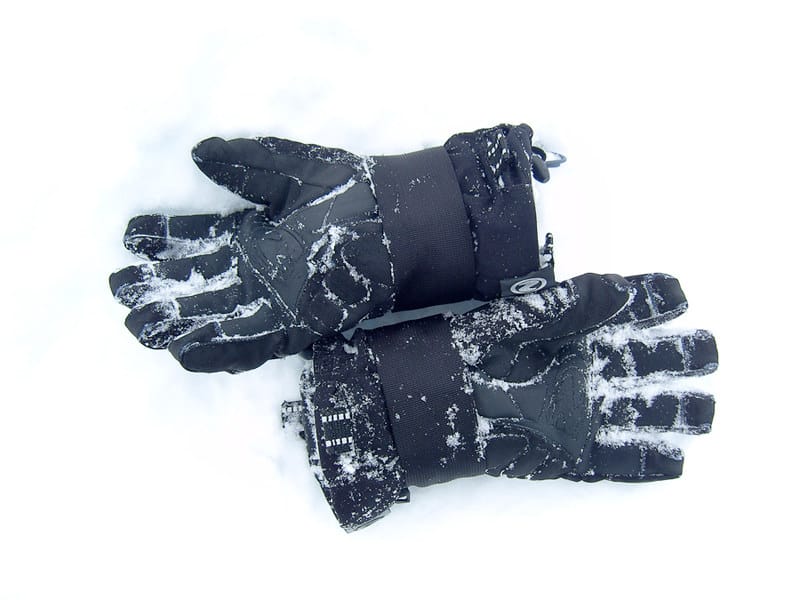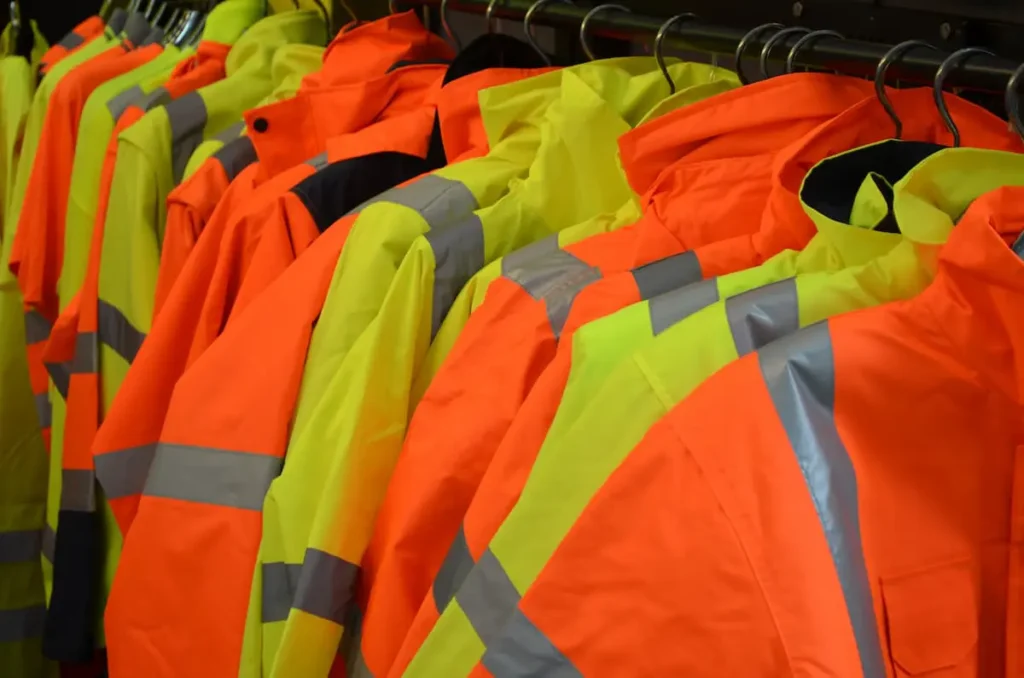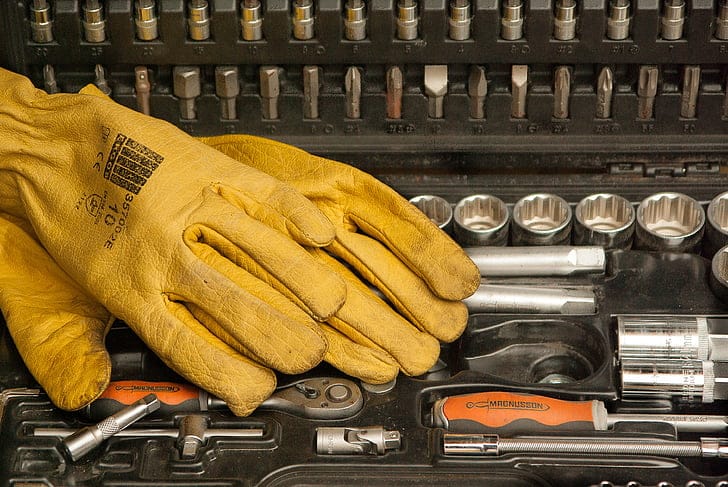
Working in Arctic or sub-zero conditions is not just tough—it’s life-threatening without the right PPE. Frostbite can develop in under 10 minutes at -30°C, and in such harsh environments, visibility drops dramatically due to snow glare, darkness, and blowing ice. When crews operate heavy machinery, signal traffic, or handle tools in freezing weather, standard gloves simply won’t do.
This 5,500+ word buyer’s guide provides everything you need to know about hi-vis winter gloves—from EN standards, thermal technology, visibility principles, case studies, and procurement strategies to ROI analysis for corporate buyers.
Hi-vis winter gloves combine high-visibility fabrics, reflective accents, and advanced thermal insulation (e.g., Thinsulate™) with waterproof and windproof membranes for extreme cold conditions. They must meet EN 511 for cold protection, EN ISO 20471 visibility principles, and EN 388 for mechanical safety. Ideal for Arctic construction, oil rigs, rail maintenance, and airport operations.
Why Arctic Work Requires Specialized Gloves
- Cold stress reduces dexterity by 60% at -20°C, increasing accident risk.
- Darkness + snow glare create visual hazards.
- Gloves need triple protection: thermal insulation, water resistance, and visibility.
- OSHA and EU regulations demand thermal PPE for sub-zero environments.
Real-World Accident Cases
Case #1 – Oil Rig, Barents Sea
Worker wore insulated gloves without hi-vis design. A crane operator couldn’t see hand signals during a blizzard. Result: load dropped, damaging equipment worth $95,000.
Solution: Hi-vis gloves with reflective strips on knuckles and cuffs.Case #2 – Rail Maintenance, Canada
Night shift at -30°C: worker’s gloves froze due to lack of waterproofing, leading to frostbite in 15 minutes. Medical cost: $25,000.
Correct PPE: EN 511-rated gloves with breathable waterproof membrane + thermal liner.Case #3 – Airport De-Icing, Iceland
Crew wore orange jackets but black gloves. A missed gesture delayed operations by 40 minutes, costing €7,000 in flight delay fees.
Prevention: Hi-vis gloves compliant with EN ISO 20471 color standards.
Standards That Define Arctic-Grade Hi-Vis Gloves
| Standard | Requirement |
|---|---|
| EN 511 | Convective cold, contact cold, and water resistance |
| EN ISO 20471 | Fluorescent color and reflective material placement |
| EN 388 | Mechanical protection (abrasion, cut, tear) |
EN 511 Explained:
- Convective Cold: Insulation against cold air flow (0–4)
- Contact Cold: Thermal resistance to touching frozen metal surfaces (0–4)
- Water Resistance: 0 = fails, 1 = passes → Arctic gloves must score 1
Material & Design: What Makes Arctic Gloves Work?
| Layer | Purpose |
|---|---|
| Fluorescent Outer Shell | Daytime visibility in snow or low light |
| Waterproof & Windproof Membrane | Prevents snow and ice penetration |
| Thermal Insulation (Thinsulate™) | Traps heat without bulk |
| Reflective Tape on Knuckles | Hand signal visibility during night operations |
| Grip Coating (Nitrile Foam) | Maintains control in icy, oily conditions |
✅ Pro Tip: Opt for multi-layer laminated gloves for better moisture management in long shifts.
Industry-Specific Arctic Applications
| Industry | Challenges | Recommended Features |
|---|---|---|
| Oil & Gas Offshore | Sub-zero temps, wind chill, crane operations | EN 511 level 3+ thermal + reflective cuff + grip coating |
| Rail & Road Maintenance | Darkness + snow glare + sharp tools | Hi-vis lime + thermal + cut resistance |
| Airport Operations | De-icing in sleet, signaling ground traffic | Hi-vis orange + waterproof membrane + touchscreen compatibility |
| Mining in Arctic Zones | Hydraulic equipment, heavy lifting | Hi-vis gloves with impact padding + EN 388 compliance |
Color Selection in Arctic Conditions
- Fluorescent Orange: Best contrast against snow and ice
- Lime Yellow: Ideal for twilight or dim daylight conditions
- Add reflective tape for night visibility under headlights
Advanced Thermal Technologies
- Thinsulate™: High warmth-to-weight ratio for dexterity
- PrimaLoft®: Premium insulation with water repellency
- Double-Layer Fleece Liners: For extended sub-zero work sessions
Common Procurement Mistakes
- Selecting gloves for warmth only, ignoring hi-vis compliance.
- Buying non-breathable waterproof gloves → Sweat freezes inside.
- Ignoring retroreflective performance → Tape fades in extreme cold.
- Not verifying grip coating for ice/oil environments.
ROI: Right vs Wrong Choice in Arctic Environments
| Scenario | Failure Cost | Hybrid Arctic Glove Cost | Savings |
|---|---|---|---|
| Frostbite medical claim | $25,000 | $32 per pair | $24,968 |
| Equipment damage (signal failure) | $95,000 | $38 per pair | $94,962 |
Procurement Checklist for Arctic Hi-Vis Gloves
- [ ] EN 511 (Convective + Contact Cold level ≥ 3)
- [ ] Waterproof + windproof membrane
- [ ] Hi-vis fluorescent + reflective accents
- [ ] EN 388 for abrasion + optional cut resistance
- [ ] Grip coating for icy conditions
Buyer FAQ (12 Critical Questions)
Q1: Are hi-vis gloves mandatory in Arctic zones?
A: While not always legally mandated, most corporate EHS policies require them.
Q2: What EN 511 score should I aim for?
A: At least 3 for both cold tests and 1 for water penetration.
Q3: Which color works best in snow glare?
A: Orange for high contrast.
Q4: How to prevent liner freeze from sweat?
A: Use breathable waterproof gloves + moisture-wicking liners.
Q5: Can gloves combine cut, thermal, and hi-vis?
A: Yes—modern triple-standard gloves exist.
Q6: How often to replace Arctic gloves?
A: After 3–6 months in extreme conditions or when reflectivity degrades.
ROI Analysis for 100 Workers (Annual)
| Option | Annual PPE Cost | Expected Losses |
|---|---|---|
| Standard Thermal Gloves | $2,500 | $150,000 |
| Hi-Vis Arctic-Grade Gloves | $4,200 | <$12,000 |
ROI: Saving >$130,000 per year with correct glove investment.
Advanced Buyer Strategies
- Require EN 511 + EN ISO 20471 specs in RFQs.
- Combine hi-vis gloves with ISO 7000-compliant hand signals for traffic crews.
- Specify reflective luminance ≥ 330 cd/lx/m² even after abrasion tests.
Conclusion
Hi-vis winter gloves for Arctic conditions are a compliance necessity and a life-saving measure. They combine thermal insulation, waterproof performance, and visibility for maximum worker safety and efficiency.
📩 Need EN-certified Arctic gloves for oil rigs, airports, or rail projects?
Email: [email protected]
🌐 www.workwearsolutions.net
Zion Zhang
Recent Posts
 Technology in PPE: How Smart Features Are Changing Buyer Expectations2025年8月9日When I first saw a “smart helmet” at an expo in 2018, I […]
Technology in PPE: How Smart Features Are Changing Buyer Expectations2025年8月9日When I first saw a “smart helmet” at an expo in 2018, I […] Sustainability in PPE: How Eco Standards Are Reshaping Buyer Decisions2025年8月9日Five years ago, “eco-friendly PPE” was a novelty—something […]
Sustainability in PPE: How Eco Standards Are Reshaping Buyer Decisions2025年8月9日Five years ago, “eco-friendly PPE” was a novelty—something […] Post-Pandemic PPE Demand: What Buyers Should Expect in 2025 and Beyond2025年8月9日If you were in PPE procurement during 2020, you probably […]
Post-Pandemic PPE Demand: What Buyers Should Expect in 2025 and Beyond2025年8月9日If you were in PPE procurement during 2020, you probably […] Compliance and Certification Updates: What PPE Buyers Need to Know in 20252025年8月9日If you’ve been in PPE sourcing long enough, you’ve probably […]
Compliance and Certification Updates: What PPE Buyers Need to Know in 20252025年8月9日If you’ve been in PPE sourcing long enough, you’ve probably […] Regional Sourcing Shifts: Where PPE Production is Moving in 20252025年8月9日If you’ve been sourcing PPE for a decade, your mental map […]
Regional Sourcing Shifts: Where PPE Production is Moving in 20252025年8月9日If you’ve been sourcing PPE for a decade, your mental map […] AI in PPE Supply Chains: Smarter Sourcing and Inventory Management2025年8月9日Three years ago, if you had told a PPE buyer that […]
AI in PPE Supply Chains: Smarter Sourcing and Inventory Management2025年8月9日Three years ago, if you had told a PPE buyer that […]
CONTACT US
- Feel free to contact us any time. We will get back to you as soon as we can!
- +86-17330061805
